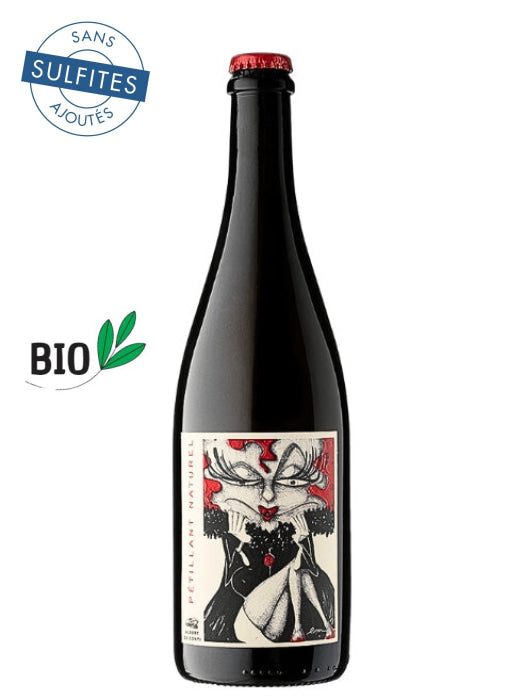Champagne and Crémant are two types of sparkling wines that are famous and highly appreciated around the world. Nevertheless, while they share several similarities, certain characteristics set them apart. Let’s take a closer look.
Summary
The common point : the production method
First of all, let’s start with the main common point that unites champagne and crémant : their production method. Indeed, while one is called Champenoise method while the other is called traditional method, these are indeed similar.
In fact, initially, only the term Champenoise method was used, regardless of the type of wine. It was only in 1990 that Champagne winemakers, eager to preserve this term exclusively for their own sparkling wines, had its use banned in other regions of France. Since then, outside of Champagne, only the phrase traditional method is authorized to be displayed on bottles.
For the rest, the two methods are completely identical! First, the grapes are pressed and the collected juice is put through a first fermentation, generally in stainless steel tanks.
Then, a tirage liqueur (a liquid made of wine, sugar, and yeast) is added to the wine to initiate a second fermentation, this time in the bottle.
Finally, the bubbles are allowed to form slowly in the cellar, and when the bottles are ready, a dosage liqueur made of wine and sugar is added, which will define the style of the sparkling wine (Extra Brut, Brut, etc.). Please note that in the case of a zero dosage or a Brut Nature, no dosage liqueur is added.
The only difference between Crémants and Champagnes : the minimum aging time on racks, which corresponds to the maturation period in the cellar. This resting time in the cellar must be at least 15 months for a classic Champagne compared to "only" 12 months for a Crémant.
It should be noted, however, that for a vintage Champagne, a minimum aging period of 36 months is required.
The differences between Crémant and Champagne
Production regions
Champagne is a fully-fledged Appellation d’Origine Contrôlée, and a Champagne can therefore only come from its own region. Conversely, crémants can be produced in almost all wine regions of France. Thus, you can find crémants from Alsace, Loire, Bordeaux, Jura, Savoie, South-West or even from Limoux in Languedoc-Roussillon.
The grape varieties
With rare exceptions, only 3 grape varieties are used to make a champagne : Pinot Noir, Chardonnay as well as Pinot Meunier. Conversely, depending on the crémant production region, many other varieties will be permitted.
For example, a Crémant de Loire can be made with Chardonnay and Pinot Noir but also Chenin, Cabernet Franc, Cabernet Sauvignon, Grolleau or even Pineau d’Aunis (non-exhaustive list). A Crémant du Jura, on the other hand, can be produced with the grape varieties Poulsard, Trousseau, Savagnin, Pinot Gris, Pinot Noir, Chardonnay, etc.
As you can see, the list of grape varieties is therefore generally much more permissive for crémant !
The taste
Although some crémants may come close to Champagne in terms of taste, the terroirs, the grape varieties used, as well as the aging time are all factors that create taste differences.
Thus, Champagne will tend to express a higher acidity compared to most crémants, especially those from sunnier regions. Moreover, the grape varieties used will naturally create differences during tasting. Finally, the aging time in the cellar for a champagne is on average longer than that of a crémant, the autolysis aromas (yeast, brioche, toasted bread, butter, etc.) will generally be more pronounced in a champagne, promoting a greater aromatic complexity.
Nevertheless, certain crémants, such as the Brut Nature from Domaine Barmès-Buecher, rival in elegance and finesse, to the point that they can sometimes be mistaken for champagne in a blind tasting!
In general, it is important to keep in mind that you may very well prefer the style of crémants from a particular region over Champagne ! This is above all a matter of taste and therefore very personal.
The price
Finally, how can we not mention the most visible difference when purchasing your bottle: the price.
Indeed, although there are high-end crémants, Champagne falls within much higher price ranges than crémants.Many factors can explain this difference, such as the slightly longer resting time in Champagne, land prices, supply and demand, or even marketing.
If you would like a more detailed analysis on this subject, feel free to read our article on Champagne production !
Conclusion
As you may have understood through this reading, Champagne and Crémant are two types of sparkling wines that share certain similarities (production method) although many differences allow them to be characterized (origin, grape varieties, terroir, price, etc.).
Also, while it is important to understand what sets them apart, it is above all necessary to appreciate their complementarity for the enthusiast! Indeed, both types offer unique tasting experiences and are suited to different occasions and budgets!
Now, all that remains is for you to make your choice from the beautiful selection of sparkling wines from La Cave Éclairée !




































